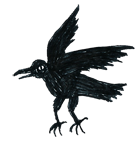




The Bemis Building (Some People Have To Drive Their House To Work)
The Grand Illusion
Free Wood Shavings
Coyote, Joseph Beuys, 1974


Excerpt from Thun’s text:
Joseph Beuys most memorable American performance was that of “Coyote: I Love America and America Loves Me”. Beuys frequently used animals, dead or alive, in his performances and installations. He would also use tufts of hair, bone, or animal pelts. Performed in New York City in the year 1974, Beuy’s choice to use a coyote as the central theme for this work was a way of aknowledging the plight of the Native Americans who, at this point in history were becoming radically active in the political arena. The American Indian Movement was in full swing. In the month of May, Beuys arrived at Kennedy Airport wrapped in felt from head to toe. He was loaded into an ambulance and delivered like a package to the Rene Block Gallery. There, Beuys spent seven days with Little John, a wild coyote who tugged at and unwrapped the felt from which he was encased. Only a chain link fence separated visitors to the gallery from Beuys and the animal. His stay with Little John was nothing but peaceful. Beuys engaged in private conversations with the animal and introduced it to a variety of objects including his hat, gloves, and walking stick.
Bauhaus Performances




For the animation/illustrated slideshow “50 Years of Performance Art: From Bauhaus to Beuys” written by Allan Kaprow scholar Spencer Thun.
Excerpt from the text:
Proof of the fact that art imitates life, the Bauhaus theater was largely mechanical in nature and mirrored the popular technology of it’s time. Mechanical ballets showcased Bauhaus dancers as human machines. The Bauhaus concieved of a new form of grace, one that chose rigid and angular movement over a dance form that appeared smooth and effortless. The Bauhaus manifesto was written by Walter Gropius and called for a unification of the arts. The Bauhaus vision was that of a theater of totality and in the words of Gropius a “cathedral of Socialism”. The work of Oskar Schlemmer defined the aesthetic of the Bauhaus. Pieces like “Glass Dance” and “Metal Dance” appeared new, exciting, and most importantly futuristic. The Bauhaus was very much ahead of it’s time in it’s attempt to fuse art and life seamlessly.




